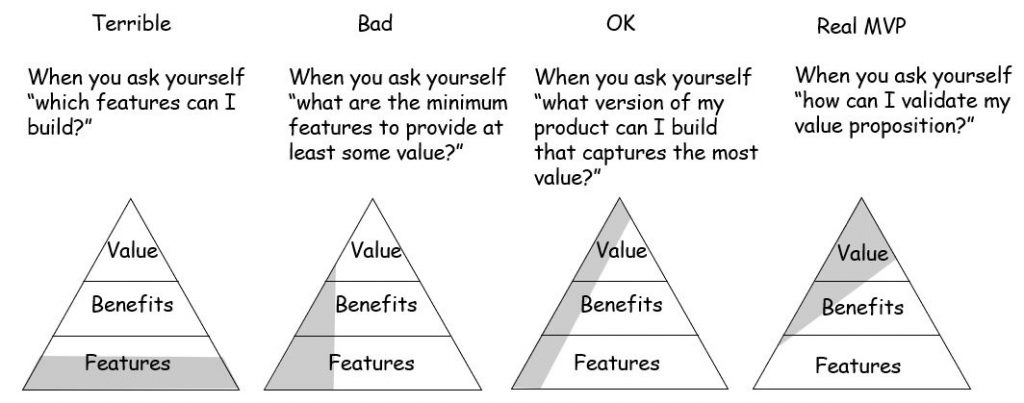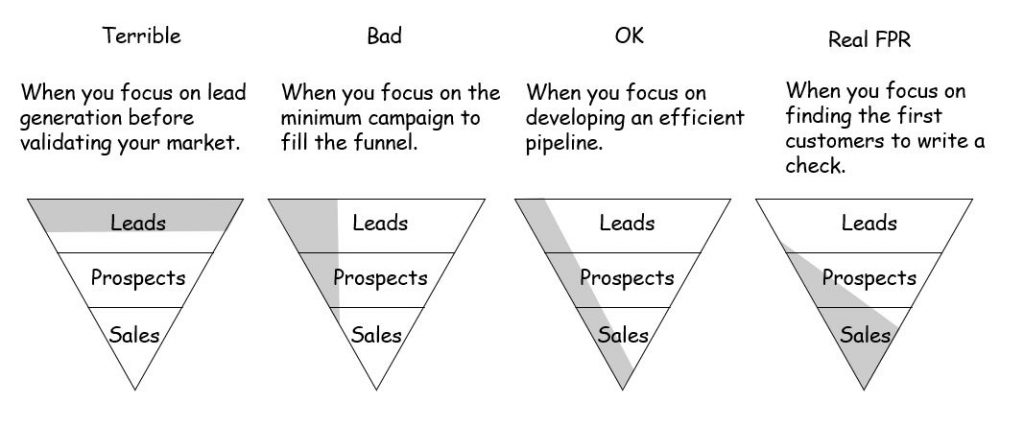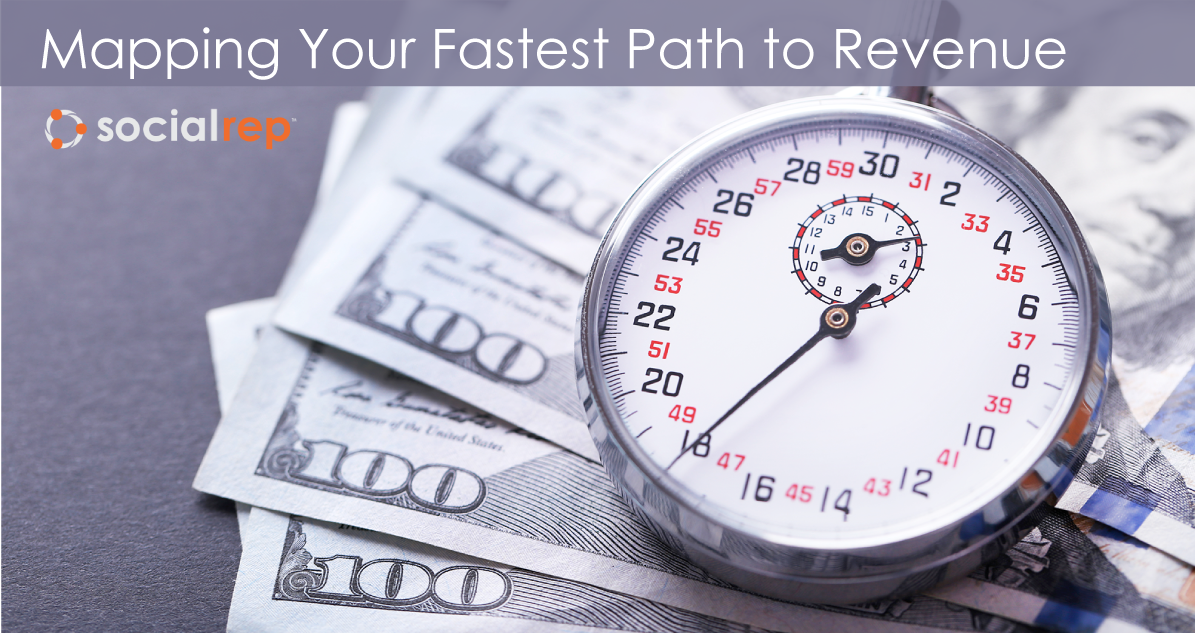We’ve been describing the concept of the Fastest Path to Revenue as a tool to adapt the Agile methodology for marketing. Instead of focusing on a Minimum Viable Product to guide development, which is useful for software, we introduced the Fastest Path to Revenue (FPR) as a more useful organizing principle for marketing and sales. The point is to rapidly figure out what customers are willing to pay for, and then iterate to improve and scale your marketing approach.
Once you have the basic framework for your Fastest Path to Revenue, it’s time to start working on developing a plan to achieve it. The good news is that none of the fundamentals required to develop a plan will likely be new to you. We’re just going to put a slight different spin on things to simplify your path.
Reviewing the MVP Model
The illustration below is often used to illustrate common development pitfalls compared to the Minimum Viable Product (MVP) approach.

What the illustration is designed to show is that the MVP approach is not about building great features, but about focusing first on how to validate your product’s value proposition. Why? Because the purpose of Agile Development and the MVP model is to ensure you’ve defined the right product before you invest another dollar in development, marketing and sales.
Pivoting from Agile Development to Agile Marketing
Pivoting from Agile Development to Agile Marketing
When we translate the MVP for Agile Development to the Fastest Path to Revenue (FPR) for Agile Marketing, a good analog for the pyramid illustration of pitfalls is the Sales Funnel. Think of it as an upside down pyramid, where instead of building on a base, you’re filling a funnel and filtering down from leads to customers. There are similar pitfalls, and they even follow a similar pattern.
The first and most obvious pitfall in Agile Marketing is spending resources on demand generation—filling the funnel with leads—before you’ve validated your market. Just as you could build endless product features that ultimately deliver no value to the customer and doom your product to failure, you could fill your pipeline with thousands of prospects that will never buy what you’re selling. It’s imperative to validate whether anyone will buy what you’re selling before you invest in pipeline.

The second pitfall is focusing on what might be called the “minimum viable campaign”, which centers on filling the funnel just enough to generate initial sales. This seems smart but misses the purpose of the FPR. The goal is first and foremost to validate the market for your product, not to test and adapt your prospecting pipeline.
The third example is okay, focusing your efforts on developing the most efficient pipeline path to revenue, though it requires measuring ROI in actual sales, not in qualified leads or pipeline.
The true FPR approach focuses not on pipeline at all, but on immediate, tactical sales activities to find the first customers willing to buy. Now, that may sound like an odd recommendation for marketing, but there’s no better recipe for agility than eliminating the silos that divide marketing and sales, and getting them focused on a shared objective to validate your new solution with a paying customer.
In a nutshell, there’s no such thing as a Marketing Qualified Lead on the Fastest Path to Revenue. The Fastest Path to Revenue is all about verifying the viability of your target market by finding a customer willing to pay for what you’re selling. There’s plenty of room for pipeline development as your market matures and you shift from validating your market to accelerating and scaling sales.
Partnering With Sales for Agile Marketing
As a marketer it’s important to understand that your Fastest Path to Revenue runs directly through sales. It’s no secret that in many companies there’s a deep divide between marketing and sales. Sales often complains the leads are no good, while marketing often complains sales can’t close any buyer that isn’t already holding a check.
Closing the marketing and sales gap always boils down to working together. Some companies have marketing and sales conduct a portion of sales calls together to ensure mutual understanding of sales objections and opportunities. Others collaborate on the definition of qualified leads and review them together before sales acceptance. But in all cases, the emphasis falls on working hand in hand at some point of the demand generation challenge.
This partnership makes perfect sense in an FPR approach, as the primary role of both marketing and sales becomes validating the market need you can best serve with your new value proposition. The most fruitful opportunities for marketing and sales to work on developing together are those closest to your organization, and this becomes the simple foundation for your FPR plan. With your FPR framework in place, you should list potential buyers to approach with sales in the following order:
- Existing customers that fit the profile for your new value proposition.
- New customers for whom you have a direct introduction to a high-level decision maker.
- Ideal customers that you have to engage directly to get a meeting.
Existing customers should take the least effort to engage, should be able to provide candid feedback on your value proposition, and should represent a known path to decision-makers and a contract. Beyond those targets with a demand generation marketing campaign is an investment you should wait to pursue until after you’ve validated your value proposition.

